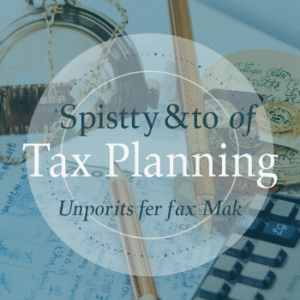Selecting the appropriate filing status is a critical decision for married couples as it directly impacts how taxes are calculated. The two primary options available in the USA for married individuals are “Married Filing Jointly” and “Married Filing Separately.” Each comes with distinct rules and potential tax outcomes, depending on your financial situation.
Filing jointly is often preferred by many couples because it allows for higher income thresholds in tax brackets, which can reduce the overall tax burden. Additionally, it opens the door to several valuable tax credits and deductions, such as education credits and deductions for student loan interest. It can also simplify the tax preparation process, as both incomes and deductions are combined on one return. This is particularly advantageous when one spouse earns significantly more than the other, as the combined income is taxed at a more favorable rate.

On the other hand, filing separately can be beneficial in certain situations. Couples may choose this option if one spouse has substantial unreimbursed medical expenses or itemized deductions that are limited by income. Filing separately allows those deductions to be calculated individually, which may result in a more favorable outcome. Additionally, filing separately could help protect one spouse from potential tax liabilities associated with the other spouse, such as unpaid taxes or penalties.
It’s also worth noting that some credits, like the Earned Income Tax Credit, are not available when filing separately. However, other credits or deductions may be unaffected, depending on the circumstances. Factors such as student loans, income-driven repayment plans, or liability for community property laws in certain states may also play a role in the decision.
Carefully analyzing your household’s unique circumstances, including income levels, deductions, and eligibility for credits, is key when choosing your filing status. Consulting with a tax professional or utilizing tax preparation software can help navigate the rules and determine the most financially advantageous option for your situation.
Tax Credits and Deductions
Married couples can take advantage of various tax credits and deductions that are designed to reduce taxable income and overall liability. Itemized deductions, such as mortgage interest and property taxes, may result in significant savings if they exceed the standard deduction amount. For those who contribute to qualified charitable organizations, donations can also be deducted if itemizing.
Tax credits are particularly beneficial because they directly reduce the amount of tax owed. The Child Tax Credit is a valuable option for parents, providing a set amount per eligible child under 17. For families with moderate or lower incomes, the Earned Income Tax Credit offers additional financial relief and, in some cases, may even result in a refund. The Child and Dependent Care Credit can help ease the financial burden of paying for childcare expenses while both spouses are working or actively seeking employment.
Couples with higher education expenses should also consider credits like the American Opportunity Tax Credit or the Lifetime Learning Credit. These credits are designed to help offset costs related to tuition, fees, and educational supplies. While both credits apply to education expenses, eligibility and the maximum amounts available vary, making it important to assess which credit offers the most benefit.

Medical expenses that exceed a certain percentage of adjusted gross income can also be deducted when itemizing. This is particularly relevant for couples who incurred high medical or dental costs throughout the tax year. Expenses such as insurance premiums, prescription medications, and long-term care may qualify under these deductions.
Student loan interest is another common deduction available for married couples, provided they meet income requirements. This deduction applies to interest paid on qualifying student loans, reducing the amount of taxable income by up to a specified limit.
Some energy-efficient home improvements can qualify for credits, encouraging homeowners to make environmentally friendly upgrades. Eligible projects may include installing solar panels, energy-efficient windows, or heating systems. It’s important to maintain records of these upgrades and consult current guidelines to verify eligibility.
Each couple’s financial situation determines which deductions and credits are applicable, so it’s essential to maintain accurate records and review eligibility requirements before filing. This approach can help ensure that all available opportunities are utilized efficiently.
Income and Investment Considerations
Married couples should carefully evaluate how combining their incomes affects their tax obligations. Higher income levels might result in being placed in a higher tax bracket, which increases the amount owed. To help offset this, contributing to tax-deferred accounts, such as traditional 401(k) plans or IRAs, can reduce taxable income and provide long-term financial benefits.
Investment income introduces additional tax considerations. For example, capital gains and dividends are taxed differently depending on their classification as short-term or long-term. Long-term investments typically enjoy lower tax rates, which can be advantageous for couples with substantial portfolios. Additionally, investments generating interest, such as bonds or savings accounts, may be subject to ordinary income tax rates, making it essential to understand how various investment vehicles impact taxable income.

When investing on behalf of children, couples should be mindful of the “Kiddie Tax” rules, which apply to unearned income above a certain threshold for minors. This income is often taxed at the parent’s higher rate, so using tax-advantaged accounts like 529 plans can provide a more efficient way to save for education expenses while minimizing tax liability.
For couples who own rental properties or receive income from other passive activities, income and losses from these investments must be reported accurately. Rental property expenses, such as maintenance, depreciation, and property taxes, may qualify as deductions to reduce taxable income. However, passive activity loss rules can limit the ability to deduct certain losses, so it’s essential to understand the specifics of these provisions.
Diversifying investments can also create opportunities to manage tax exposure. For instance, holding a mix of tax-advantaged accounts and taxable accounts allows for flexibility when realizing gains or losses. Strategic asset allocation and tax-loss harvesting may further enhance the tax efficiency of a portfolio.
Properly documenting all investment-related transactions is essential to avoid errors when filing. Whether dealing with capital gains, interest, or other investment income, maintaining clear and organized records ensures compliance with tax laws and facilitates more informed financial planning.
Retirement and Savings Strategies
Maximizing retirement savings as a couple requires careful planning to ensure both spouses can benefit from tax-advantaged accounts. For instance, contributing to both traditional and Roth IRAs provides flexibility in managing taxable income now and during retirement. Traditional IRAs allow pre-tax contributions, reducing current taxable income, while Roth IRAs offer tax-free growth and withdrawals later, assuming eligibility requirements are met.
Couples with access to employer-sponsored plans like 401(k)s should aim to contribute enough to take full advantage of any employer match. This is essentially extra income that boosts savings. Additionally, high-income earners may benefit from contributing to non-deductible IRAs or considering backdoor Roth IRA conversions, depending on their financial situation and tax obligations.
Health Savings Accounts (HSAs) are another valuable tool for retirement planning when paired with high-deductible health plans. Contributions are tax-deductible, and withdrawals for qualified medical expenses are tax-free, making these accounts a dual-purpose savings vehicle for healthcare costs and long-term financial goals.

For those nearing retirement age, strategies such as catch-up contributions are available, allowing individuals over 50 to save more in IRAs and 401(k)s. These additional contributions can help accelerate retirement savings in the later stages of a career.
Investing in diversified accounts, including taxable brokerage accounts, can further enhance flexibility in accessing funds for various needs. Unlike retirement accounts with contribution limits or withdrawal restrictions, these accounts offer the advantage of liquidity and more control over tax implications, such as capital gains.
Married couples should also evaluate whether consolidating accounts or keeping them separate aligns better with their financial goals. Combining accounts may simplify management, while maintaining separate accounts could offer tailored strategies for individual needs.
Tax diversification is a key factor to consider, as it allows for a mix of taxable, tax-deferred, and tax-free income sources during retirement. This approach provides options to minimize taxes while accessing funds strategically, depending on current and future tax rates.
Estate and Gift Tax Planning
Understanding the rules surrounding estate and gift taxes is important for married couples aiming to optimize their financial plans. The federal estate tax exemption allows a significant amount of wealth to pass to heirs without triggering federal estate taxes. Additionally, married couples can take advantage of the portability provision, which enables a surviving spouse to utilize any unused portion of their deceased spouse’s exemption, potentially doubling the amount that can be transferred tax-free.
For lifetime wealth transfers, the annual gift tax exclusion offers a valuable opportunity. This exclusion allows individuals to give a certain amount per recipient each year without incurring gift taxes or using any of their lifetime estate and gift tax exemption. Married couples can combine their exclusions, effectively doubling the amount they can give to a single recipient annually without tax implications.

Gifts between spouses are generally not subject to gift taxes, provided both spouses are U.S. citizens. This unlimited marital deduction facilitates the transfer of assets between spouses during their lifetime or at death, ensuring that wealth can be distributed without immediate tax concerns. However, if one spouse is not a U.S. citizen, special rules apply, and there are limits on the amount that can be transferred tax-free.
For couples who plan to make substantial gifts to family members or other beneficiaries, utilizing strategies like trusts may offer additional tax benefits and control over how assets are distributed. Irrevocable trusts, such as a bypass trust or a charitable remainder trust, can help reduce taxable estates while providing financial advantages to beneficiaries.
It’s also crucial to understand state-level estate and gift tax laws, as some states impose taxes at lower thresholds than the federal exemption. This can significantly impact planning strategies for couples living in those states. Reviewing both federal and state rules can help identify opportunities to mitigate potential taxes.
Proper documentation and record-keeping are essential when making gifts or structuring estate plans. This ensures compliance with tax laws and allows for accurate reporting when required. Working with a qualified estate planning attorney or tax advisor can provide additional insights and help develop a tailored approach that aligns with long-term financial goals.
State Tax Implications
Tax rules and rates can vary widely from one state to another, creating unique considerations for married couples when filing. Some states follow a progressive tax system, while others have flat rates or no state income tax at all. These differences can influence overall tax liability and impact financial planning strategies.
In community property states, income earned by either spouse during the marriage is typically considered joint property and may need to be split evenly for tax purposes. This can affect how income is reported and which deductions or credits apply. It’s essential to familiarize yourself with the specific regulations in your state, as they may differ from federal tax rules.

Couples relocating or earning income in multiple states may face additional challenges. In such cases, it’s important to determine residency and source of income to comply with varying state tax laws. Many states have reciprocal agreements that allow residents working in neighboring states to avoid double taxation on wages, but this does not always extend to other income types.
State-level deductions and credits can also play a role in minimizing tax burdens. For example, some states offer unique benefits for retirees, property owners, or families with dependents. Understanding these options and integrating them into your planning can lead to significant savings.
If one spouse is self-employed or owns a business, state tax obligations might include estimated taxes, additional filings, or specific deductions. Keeping accurate records of business income and expenses ensures compliance with state requirements and helps avoid unnecessary penalties.
Given the complexity of state tax systems, professional guidance can be invaluable. A tax advisor familiar with local laws can help identify opportunities to reduce liability, file accurately, and manage obligations efficiently. Taking the time to research and understand state-specific rules ensures that couples can optimize their tax strategies while staying compliant with applicable regulations.

